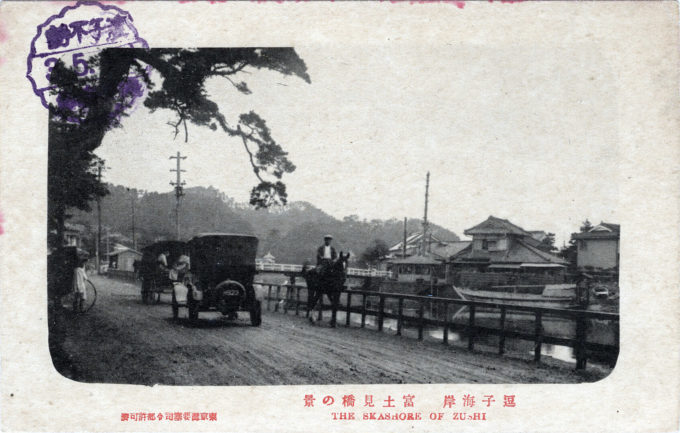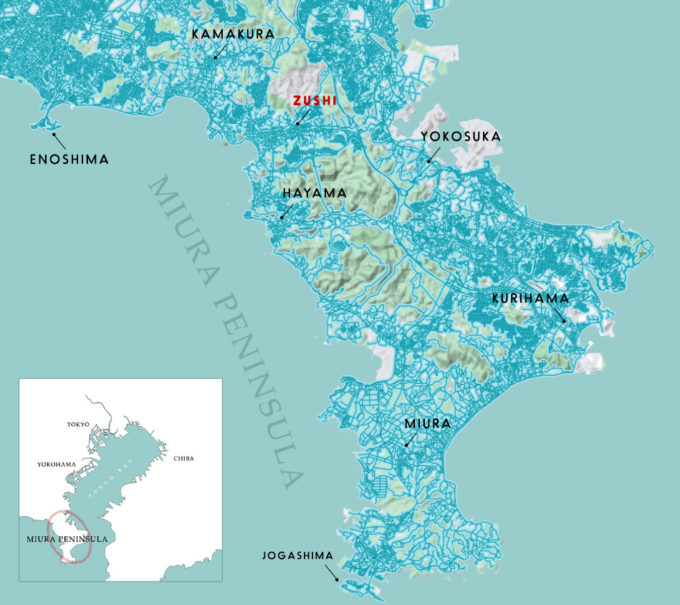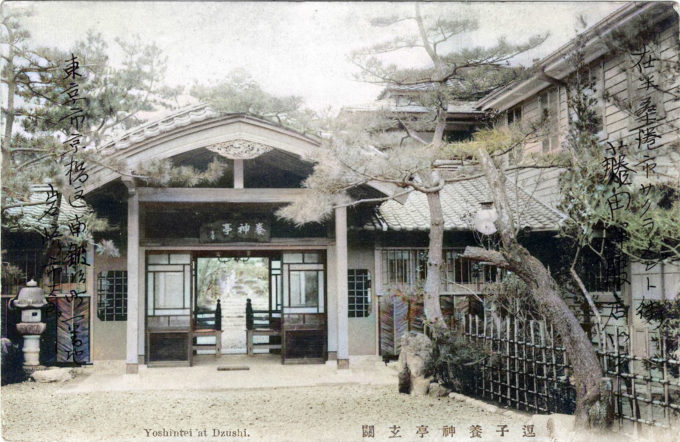
“The seashore of Zushi”, Miura Peninsula, c. 1925. A view of Futomi Bridge in the peninsular village of Zushi, which, because of its close proximity to Yokohama and Tokyo, grew rapidly in the 1920s from a quiet seaside hamlet into a busy (and often crowded) beach resort.
See also:
Hayama Beach, Kamakura, c. 1910.
Yuigahama Beach, Kamakura, c. 1910.
Kamakura Station, c. 1910.
“From the 1920s the beach was perennially more popular than any other tourist attraction in Kamakura. This fact provoked considerable ambivalence among Kamakura residents because beach-going was enthusiastically adopted by people with little interest in Kamakura’s other charms. And people did arrive in force.
Map: The location of Zushi on the Miura Peninsula (and the peninsula relative to Tokyo and Yokohama).
“In July and August 1924, 40,000 people visited Chigasaki and Fujisawa beaches. A few years later, these numbers would come to seem small. On one day alone – August 1, 1926 – 35,000 alighted at Kamakura station and 25,000 at Zushi station, nearly all of them headed for the seashore, while on a summer Sunday two years later – July 29, 1928 – over 33,000 travelers went to just Zushi’s beach.
“The local towns hastily built facilities for these visitors. Using funds from both the national and prefectural government, Zushi led the way in 1929 by constructing ‘sea houses’ (umi no ka) where visitors could change clothes, leave their belongings, shower off the saltwater, and purchase snacks.”
– Post-Fascist Japan: Political Culture in Kamakura After the Second World War, by Laura Hein, 2018




Pingback: High school class excurision to the Miura peninsula in line outside Zushi Station, Zushi, c. 1910. | Old Tokyo